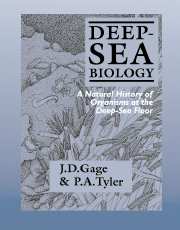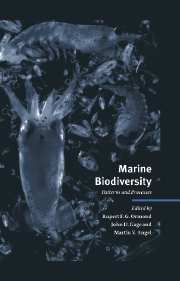HORIZONTAL DISTRIBUTIONS IN THE DEEP SEA
Deriving from the monotony of the fauna from abyssal basins in trawlings undertaken world-wide during the pioneering voyage of the ‘Challenger’, the first conception of the zoogeography of the deep sea was of a single province, sharing many species with cosmopolitan distributions. Although this view was supported by Bruun (1957), other workers have perceived some differentiation of the abyssal into four zoogeographic zones, the Atlantic, Indo-Pacific, Arctic and Antarctic (Ekman, 1953). The extensive global sampling investigations of Russian workers has been summarized in English by Vinogradova (1959, 1962a,b, 1979). She found only 15% of species occurring in more than one ocean and only 4% being found in all of them. These conclusions follow the philosophy of an essentially unified fauna for the abyssal and hadal zones; whilst recognizing substantial differentiation has occurred in different oceanic regions, particularly those corresponding to topographic boundaries such as trenches (Fig. 10.1).
For the N. Atlantic, these conclusions were essentially similar to those of Mortensen (1907), and are more or less supported by zoogeographic analyses of collections from the ‘Galathea’ expedition (Kirkegaard, 1954; Wolff, 1962; Levi, 1964; Millar, 1970). Other schemes developed from the ‘Galathea’ sampling differ only with respect to the major faunistic connections (Madsen, 1961b; Hansen, 1967,1975; Knudsen, 1979). Other, more complex, schemes have been developed subdividing Ekman's zones into further subareas and provinces with species having quite narrow ranges separated by topographic barriers (Clark, 1962) or mainly related to the origin and temperature structure of deep-water masses (Menzies et al., 1973).

